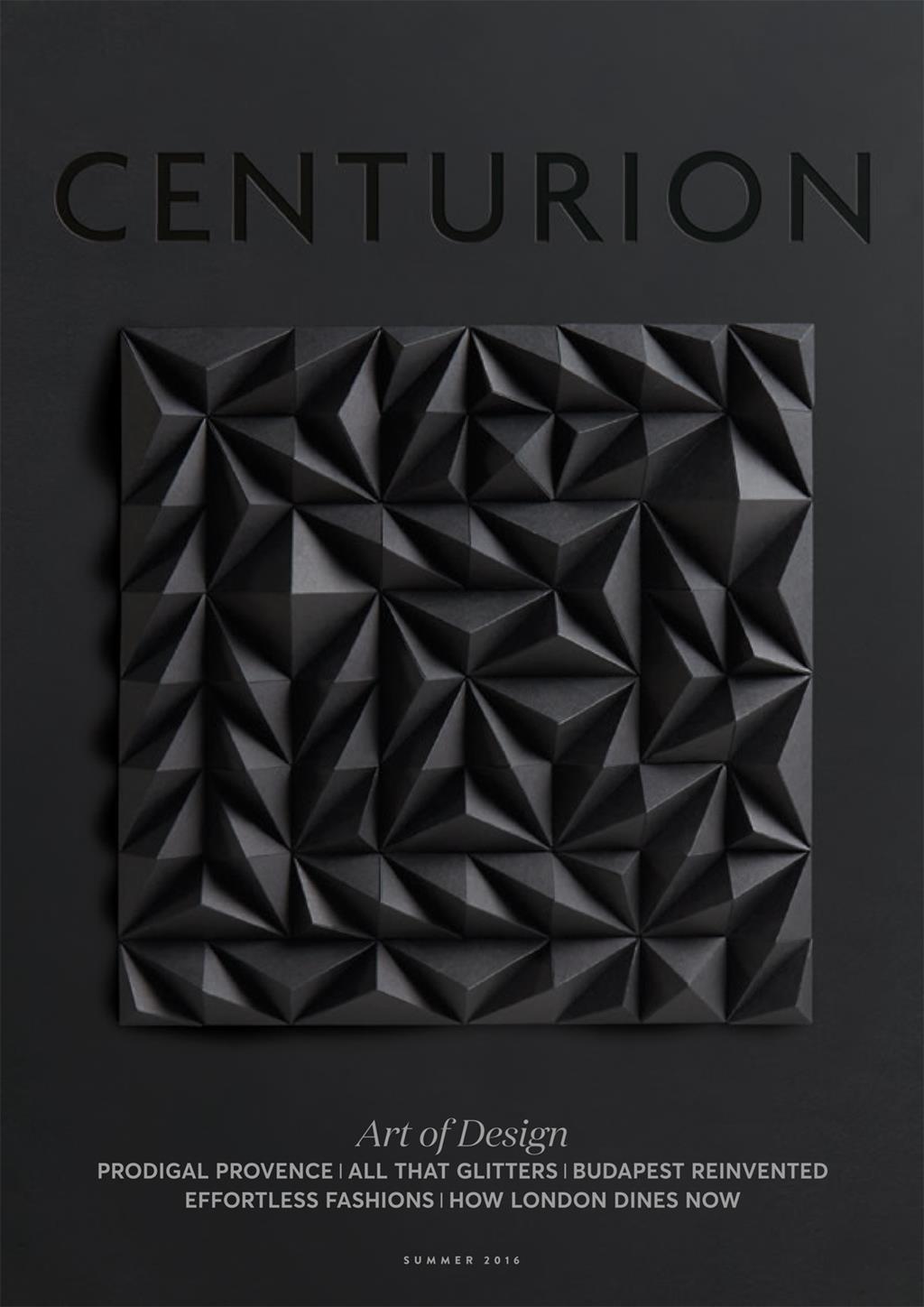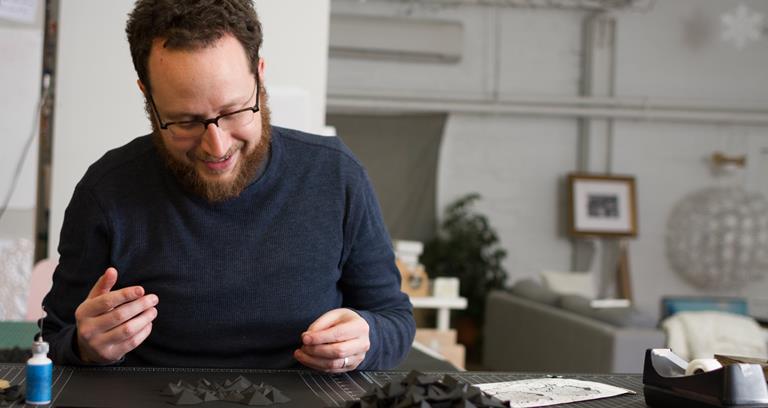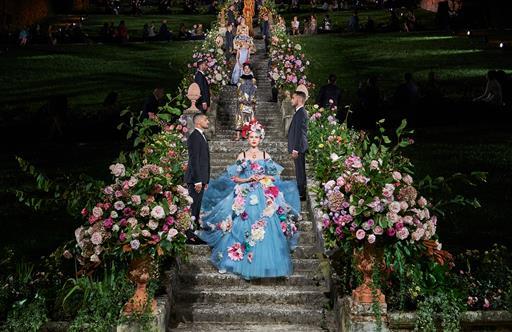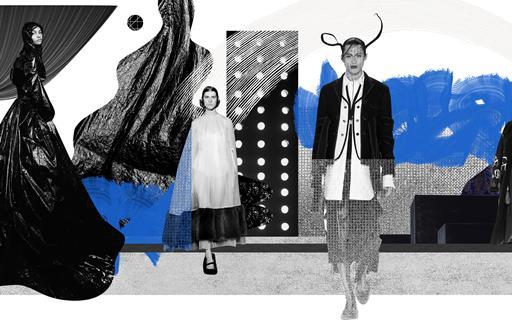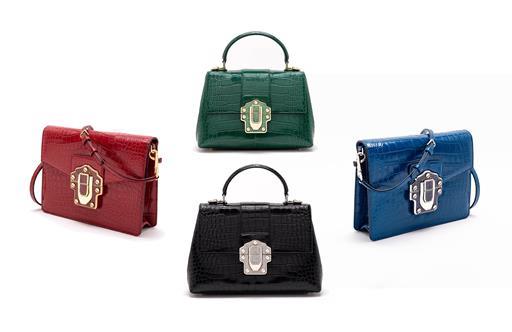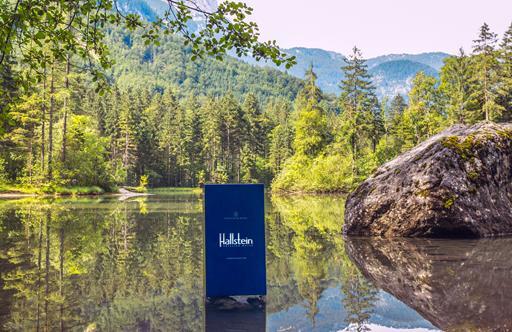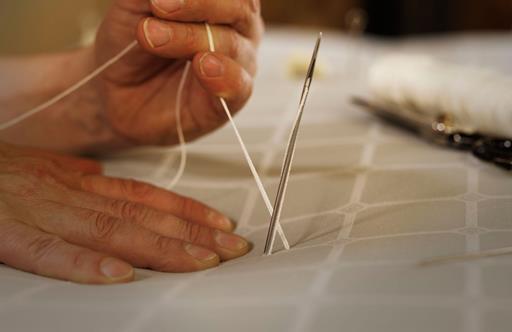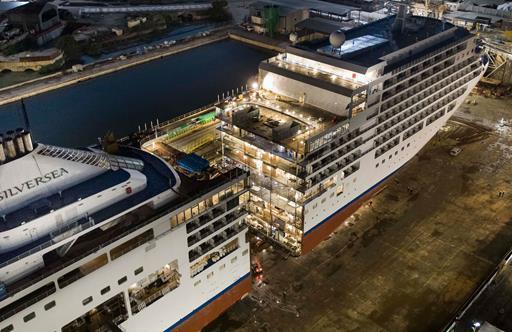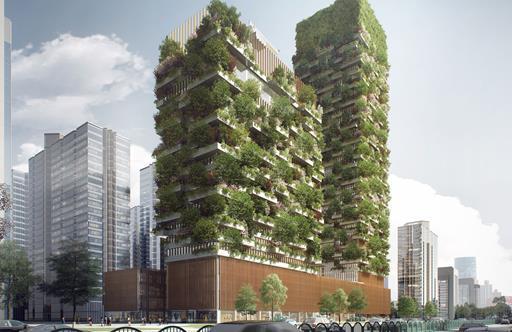The Geometric Black
Issue 2 / 2016 – We talk to Matt Shlian, paper engineer and creator of the latest Centurion Magazine cover
Describe what you do in five words or less.
I cut and fold paper.
What is the typical process behind creating your designs?
My process is extremely varied from piece to piece. Often I start without a clear goal in mind, working within a series of limitations. For example on one piece I'll only use curved folds, or make my lines this length or that angle etc. Other times I’ll begin with an idea for movement and try to achieve that shape or form somehow. Along the way something usually goes wrong and a mistake becomes more interesting than the original idea and I work with that instead.
I'd say my starting point is curiosity; I have to make the work in order to understand it. If I can completely visualise my final result I have no reason to make it – I need to be surprised and learn something.
What is special about working with paper?
There is immediacy to paper. You can take a sheet and begin to work, or plan something out methodically. It is a medium with a memory and one with which you can naturally create a dialogue. It is also unassuming – you might think you understand it as a material, but a simple manipulation cause one to reassess what it is.
What inspired you for the Centurion Magazine cover design?
The static series was an exploration in form, repetition and balance, a slow methodical building one after another. There is something really simple about them, very Montessori.
The static part didn't come until I was documenting the pieces and laying them on each other – removing layers in a rapid succession let me see them in a new way. The underlying patterns were only revealed via animation.
What is next? What is the future of paper engineering?
I’ve been working on shifting the scale of my work over the last few years and I think that is a trend that will continue. Working on a micro/nano scale alongside the scientists has led to unexpected results.
My gallery work has gotten to a consistently larger size – 2 metres and larger. I’m hoping to do massive architectural collaborations in the coming years.
Visit mattshlian.com
